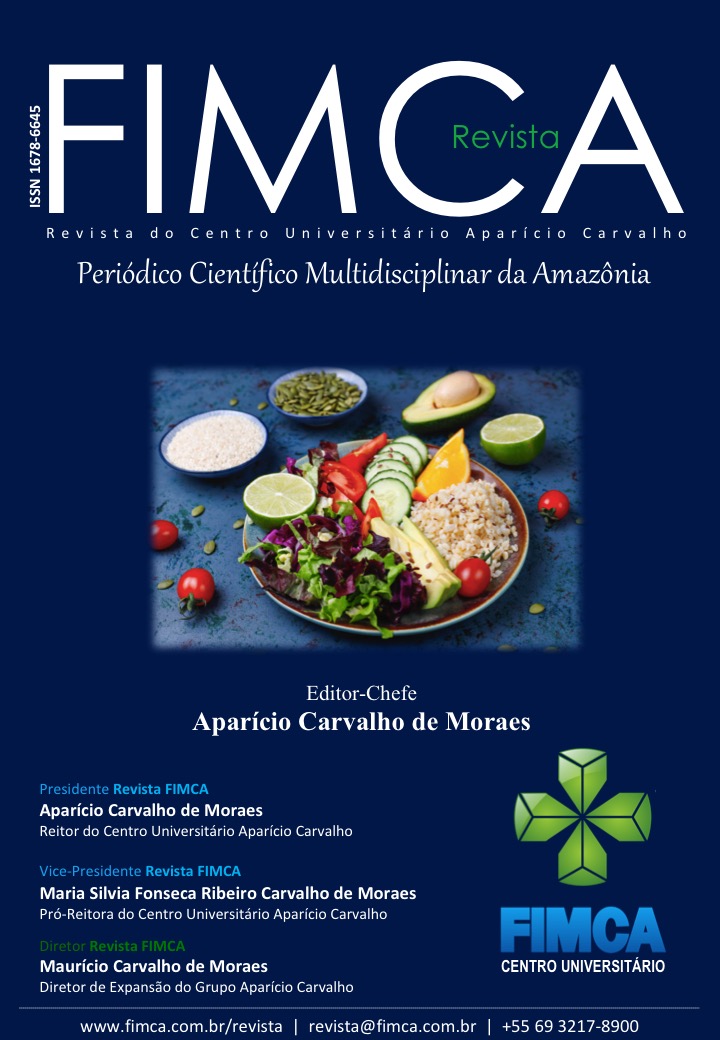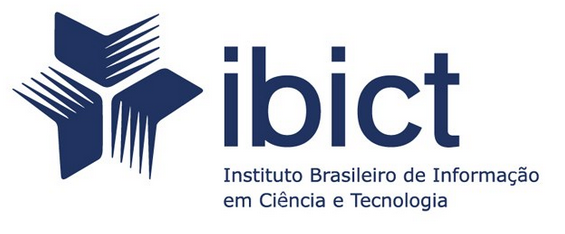DESAFIOS NO RECONHECIMENTO DO SEXO EM PIRARUCU (Arapaima gigas): UMA REVISÃO DA LITERATURA
CHALLENGES IN THE RECOGNITION OF SEX IN PIRARUCU (Arapaima gigas): A LITERATURE REVIEW
DOI:
https://doi.org/10.37157/fimca.v7i2.115Palavras-chave:
Aramaima gigas, psicultura, gênero, sexagem, determinação de sexoResumo
O pirarucu, é o maior peixe de água doce da América do Sul, com um enorme potencial para a piscicultura, portanto um manejo adequado proporciona um melhor aproveitamento comercial. Esse peixe possui uma aparente ausência de dimorfismo juntamente com um comportamento reprodutivo que requer maiores cuidado para na criação. A existência da dificuldade para identificação de gênero nessa espécie fez com que pesquisadores se esforçassem para criar um protocolo de sexagem que viesse facilitar o manejo. Este artigo visa apresentar os estudos realizados sobre o tema nos últimos 60 anos, que tiveram uma abordagem morfológica, fisiológica e molecular.
Pirarucu is the largest freshwater fish in South America, with enormous potential for fish farming, so proper management provides better commercial use. This fish has an apparent lack of dimorphism along with a reproductive behavior that requires greater care in breeding. The existence of the difficulty in identifying the genus in this species caused researchers to strive to create a sexing protocol that would facilitate management. This article aims to present the studies carried out on the subject in the last 60 years, which had a morphological, physiological and molecular approach.
Referências
ALMEIDA, I.; IANELLA, P.; FARIA, M.; PAIVA, S.; CAETANO, A. Bulked segregant analysis of the pirarucu (Arapaima gigas) genome for identification of sex-specific molecular markers. Genetics and Molecu-lar Research, vol. 12, no. 4, p. 6299–6308, 2013. DOI 10.4238/2013.December.4.17.
AMARAL, A. C.; LIMA, A. F.; GANECO?KIRSCHNIK, L. N.; AL-MEIDA, F. L. Morphological characterization of pirarucu Arapaima gigas (Schinz, 1822) gonadal differentiation. Journal of Morphology, vol. 281, no. 4–5, p. 491–499, 21 Apr. 2020. DOI 10.1002/jmor.21116.
AMARAL, E.; ALMEIDA, O. PRODUTIVIDADE E EFICIÊNCIA ECONÔMICA DA PESCA DE PIRARUCU (Arapaima gigas) NAS ÁREAS DE MANEJO DAS RESERVAS AMANÃ E MAMIRAUÁ. Biologia, conservação e manejo participativo de pirarucus na Pa-nAmazônia. 1a Edição. Manaus: Instituto de Desenvolvimento Sustentá-vel Mamirauá, 2013. p. 151–162.
BEATO, S.; TOLEDO-SOLÍS, F. J.; FERNÁNDEZ, I. Vitamin k in vertebrates’ reproduction: Further puzzling pieces of evidence from teleost fish species. Biomolecules, vol. 10, no. 9, p. 1–26, 1 Sep. 2020. DOI 10.3390/biom10091303.
CARREIRO, C. R. P.; FURTADO-NETO, M. A. de A.; MESQUITA, P. E. C.; BEZERRA, T. A. Sex determination in the Giant fish of Amazon Basin, Arapaima gigas (Osteoglossiformes, Arapaimatidae), using lapa-roscopy. Acta Amazonica, vol. 41, no. 3, p. 415–419, 2011. DOI 10.1590/S0044-59672011000300012.
CASAS, L.; SÁNCHEZ, L.; ORBÁN, L. Sex-associated DNA markers from turbot. Marine Biology Research, vol. 7, no. 4, p. 378–387, May 2011. DOI 10.1080/17451000.2010.515226.
CASTELLO, L. Lateral migration of Arapaima gigas in floodplains of the Amazon. Ecology of Freshwater Fish, vol. 17, no. 1, p. 38–46, 1 Mar. 2008a. DOI 10.1111/j.1600-0633.2007.00255.x.
CASTELLO, L. Nesting habitat of Arapaima gigas (Schinz) in Amazoni-an floodplains. Journal of Fish Biology, vol. 72, no. 6, p. 1520–1528, 1 Apr. 2008b. DOI 10.1111/j.1095-8649.2007.01778.x.
CHU-KOO, F.; DUGUÉ, R.; ALVÁN AGUILAR, M.; CASANOVA DAZA, A.; ALCÁNTARA BOCANEGRA, F.; CHÁVEZ VEINTEMILLA, C.; DUPONCHELLE, F.; RENNO, J.-F.; TELLO, S.; NUÑEZ, J. Gender determination in the Paiche or Pirarucu (Arapaima gigas) using plasma vitellogenin, 17?-estradiol, and 11-ketotestosterone levels. Fish Physiology and Biochemistry, v. 35, n. 1, p. 125–136, 2009. DOI 10.1007/s10695-008-9211-8.
CUVIER, G.; SCHINZ, H. Das Thierreich, eingetheilt nach dem Bau der Thiere als Grundlage ihrer Naturgeschichte und der vergleichen-den Anatomie von den Herrn Ritter von Cuvier /. Stuttgart und Tü-bingen: in der J.G. Cotta’schen Buchhandlung, 1821. DOI 10.5962/bhl.title.120173.
DORIA, C. R. da C.; CATÂNEO, D. T. B. dos S.; VILARA, G. T.; VITULE, J. R. S. Is there a future for artisanal fishing in the Amazon? The case of Arapaima gigas. Management of Biological Invasions, v. 11, n. 1, p. 1–8, 2020. DOI 10.3391/mbi.2020.11.1.01.
DU, K.; WUERTZ, S.; ADOLFI, M.; KNEITZ, S.; STÖCK, M.; OLIVEIRA, M.; NÓBREGA, R.; ORMANNS, J.; KLOAS, W.; FERON, R.; KLOPP, C.; PARRINELLO, H.; JOURNOT, L.; HE, S.; POSTLETHWAIT, J.; MEYER, A.; GUIGUEN, Y.; SCHARTL, M. The genome of the arapaima (Arapaima gigas) provides insights into gigan-tism, fast growth and chromosomal sex determination system. Scientific Reports, v. 9, n. 1, p. 5293, 2019. DOI 10.1038/s41598-019-41457-x. A
DUGUÉ, R.; CHU-KOO, F.; ALCANTARA, F.; DUPONCHELLE, F.; RENNO, J.-F.; NUÑEZ, J. Purification and assay of Arapaima gigas vitellogenin: Potential use for sex determination. Cybium, v. 32, n. 2, p. 111, 2008. DOI https://doi.org/10.26028/cybium/2008-322SP-049.
FABRE, N. N.; ALONSO, J. C. Recursos ícticos no Alto Amazonas: sua importância para as populações ribeirinhas. Bol. Mus. Para. Emílio Goeldi, sér Zoo, v. 14, n. 1, p. 19–55, 1998. Available at: https://www.researchgate.net/profile/Nidia_Fabre/publication/284662378_Recursos_Icticos_no_Alto_Amazonas_Sua_Importancia_para_as_populacoes_ribeirinhas/links/568ddaef08aef987e5661cd4/Recursos-Icticos-no-Alto-Amazonas-Sua-Importancia-para-as-populacoes-rib.
FLORES, H. G. Desarrollo sexual del paiche (arapaima gigas) en las zonas reservadas del estado (ríos Pacaya y Samiria) 1971 - 1975. In-forme Instituto del Mar del Peru-Imarpe, v. 67, p. 1-21p, 1980.
FONTENELE, O. Contribuição para o conhecimento da biologia do pirarucu, “Arapaima gigas” (Cuvier), em cativeiro. Revista Brasileira de Biologia, v.8, n. 4, p. 445–459, 1948.
FONTENELE, O. Hábitos de desova do pirarucu, Arapaima gigas (Cuvier) e evolução de sua larva. Fortaleza: Departamento Nacional de Obras Contra as Secas – Serviço de piscicultura, 1953.
GODINHO, H. P.; SANTOS, J. E.; FORMAGIO, P. S.; GUIMARÃES-CRUZ, R. J. Gonadal morphology and reproductive traits of the Amazo-nian fish Arapaima gigas (Schinz, 1822). Acta Zoologica, v. 86, n. 4, p. 289–294, 2005. DOI 10.1111/j.1463-6395.2005.00213.x.
IBGE - INSTITUTO BRASILEIRO DE GEOGRAFIA E ESTATÍSTI-CA. Produção da aquicultura, por tipo de produto. 2020. Tabela 3940. Available at: https://sidra.ibge.gov.br/tabela/3940#resultado. Accessed on: 2 Dec. 2020.
IMBIRIBA, E. P. Potencial de criação de Pirarucu, Arapaima gigas,em cativeiro. Acta Amazonica, v. 31, n. 2, p. 299–299, 2001. DOI 10.1590/1809-43922001312316.
IMBIRIBA, E. P. Produção e manejo de alevinos de pirarucu, Arapaima gigas (Cuvier). Embrapa – CPATU. Circular Técnica 57, Belém, p. 1-19p, 1991.
KARLSEN, O; HOLM, J. Ultrasonography, a non-invasive method for sex determination in cod (Gadus morhua. Journal of Fish Biology, v. 44, n. 6, p. 965–971, 1994. DOI 10.1111/j.1095-8649.1994.tb01268.x.
LAVOUÉ, S.; SULLIVAN, J. P. Simultaneous analysis of five molecular markers provides a well-supported phylogenetic hypothesis for the living bony-tongue fishes (Osteoglossomorpha: Teleostei). Molecular Phylo-genetics and Evolution, v. 33, n. 1, p. 171–185, 2004. DOI 10.1016/j.ympev.2004.04.021.
LEE, C. S.; DONALDSON, E. M. General discussion on “Reproductive biotechnology in finfish aquaculture.” Aquaculture, v. 197, n. 1–4, p. 303–320, 2001. DOI 10.1016/S0044-8486(01)00591-9.
LIMA, A. F. The influence of sex ratio on the reproduction of pirarucu, Arapaima gigas, in captivity. Acta Amazonica, v. 48, n. 1, p. 38–41, 2018. DOI 10.1590/1809-4392201701181.
LIMA, A. F.; RODRIGUES, A. P. O.; LIMA, L. K. F. de; MACIEL, P. O.; REZENDE, F. P.; FREITAS, L. E. L. de; TAVARES-DIAS, M.; BEZERRA, T. A. Alevinagem, recria e engorda de pirarucu. 1a Edi-ção. Brasília, 2017. Available at: https://www.infoteca.cnptia.embrapa.br/infoteca/handle/doc/1071140.
LIMA, A. F.; RODRIGUES ALVES, R.; SIMON TORATI, L. Efficien-cy of color pattern as a method for sex identification in Arapaima gigas (Schinz, 1822). Pan-American Journal of Aquatic Sciences, vol. 15, no. 2, p. 87–92, 2020. .
LOPES, K.; QUEIROZ, H. L. de. Avaliação do conhecimento tradicio-nal dos pescadores da RDSM aplicado à identificação do sexo de pira-rucus. UAKARI, v. 5, n. 2, p. 59–66, 2010. DOI 10.31420/uakari.v5i2.67.
LOPES, K.; QUEIROZ, H. L. Uma revisão das fases de desenvolvimen-to gonadal de pirarucus Arapaima gigas (Achinz , 1822) por meio da análise macroscópica como uma proposta para unificação destes con-ceitos e sua aplicação prática. UAKARI, v. 5, p. 39–48, 2009. DOI 10.31420/uakari.v5i1.53. Available at: https://uakari.mamiraua.org.br/UAKARI.
MARQUES, D. K.; VENERE, P. C.; GALETTI JUNIOR, P. M. Chromo-somal characterization of the bonytongue Arapaima gigas (Osteoglossi-formes: Arapaimidae). Neotropical Ichthyology, v. 4, n. 2, p. 215–218, 2006. DOI 10.1590/S1679-62252006000200007.
MARTIN-ROBICHAUD, D. J.; ROMMENS, M. Assessment of sex and evaluation of ovarian maturation of fish using ultrasonography. Aquacul-ture Research, v. 32, n. 2, p. 113–120, 2001. DOI 10.1046/j.1365-2109.2001.00538.x.
MATTSON, N. S. A new method to determine sex and gonad size in live fishes by using ultrasonography. Journal of Fish Biology, v. 39, n. 5, p. 673–677, 1991. DOI 10.1111/j.1095-8649.1991.tb04397.x.
MÉNDEZ, C. C.; LÓPE, G. R.; CARVAJAL-VALLEJOS, F. M.; PERE-DO, R. S.; WOJCHIECHOWSK, J. M.?;; VAN DAMME, P. A. Las especies nativas y el paiche (Arapaima gigas)- Historia de su introduc-ción en Bolivia. La cadena de valor del pescado en el norte amazónico de Bolivia Contribución de especies nativas y de una especie introdu-cida (el paiche-Arapaima gigas). Edit. PIEB, 2012. p. 44–47.
MIGDALSKI, E. C. Contribution to the Life History of the South Ameri-can Fish Arapaima gigas. Copeia, v. 1957, n. 1, p. 54, 1957. DOI 10.2307/1440526.
ORTENBURGER, A. I.; JANSEN, M. E.; WHYTE, S. K. Nonsurgical videolaparoscopy for determination of reproductive status of the Arctic charr. Canadian Veterinary Journal, v. 37, n. 2, p. 96–100, 1996.
PANTOJA, G. F.; CORDEIRO, Y. E. M.; SILVA, S. G.; DE SOUSA, R. L. Uso e aplicações medicinais da mamorana (Pachira aquatica Aublet) pelos ribeirinhos de São Lourenço, Igarapé-Miri, estado do Pará, Amazônia. Interações (Campo Grande), v. 21, n. 3, p. 647–662, 2020. DOI 10.20435/inter.v21i3.2146.
PASCUAL, P.; PEDRAJAS, J. R.; TORIBIO, F.; LÓPEZ-BAREA, J.; PEINADO, J. Effect of food deprivation on oxidative stress biomarkers in fish (Sparus aurata). Chemico-Biological Interactions, v. 145, n. 2, p. 191–199, 2003. DOI 10.1016/S0009-2797(03)00002-4.
PEIXEBR. Anuário. 2020. Available at: https://www.peixebr.com.br/anuario-2020/. Accessed on: 11 Oct. 2020.
SAINT-PAUL, U. Potential for aquaculture of South American freshwa-ter fishes: A review. Aquaculture, v. 54, n. 3, p. 205–240, 1986. DOI 10.1016/0044-8486(86)90329-7.
SHIELDS, R. J.; DAVENPORT, J.; YOUNG, C.; SMITH, P. L. Oocyte maturation and ovulation in the Atlantic halibut, Hippoglossus hippoglos-sus (L.), examined using ultrasonography. Aquaculture Research, v. 24, n. 2, p. 181–186, 1993. DOI 10.1111/j.1365-2109.1993.tb00539.x.
TORATI, L. S.; LIMA, A. F.; KIRSCHNIK, L. N. G.; MIGAUD, H. Endoscopy and Cannulation as Non-Invasive Tools to Identify Sex and Monitor Reproductive Development in Arapaima gigas. Copeia, v. 107, n. 2, p. 287, 2019. DOI 10.1643/OT-18-127.
TORATI, L. S.; VARGES, A. P. S.; GALVÃO, J. A. S.; MESQUITA, P. E. C.; MIGAUD, H. Endoscopy application in broodstock management of Arapaima gigas (Schinz, 1822). Journal of Applied Ichthyology, v. 32, n. 2, p. 353–355, 2016. DOI 10.1111/jai.12988.
WANG, D.; MAO, H.-L.; CHEN, H.-X.; LIU, H.-Q.; GUI, J.-F. Isola-tion of Y- and X-linked SCAR markers in yellow catfish and application in the production of all-male populations. Animal Genetics, v. 40, n. 6, p. 978–981, 2009. DOI 10.1111/j.1365-2052.2009.01941.x.
WATANABE, L.; GOMES, F.; VIANEZ, J.; NUNES, M.; CARDOSO, J.; LIMA, C.; SCHNEIDER, H.; SAMPAIO, I. De novo transcriptome based on nextgeneration sequencing reveals candidate genes with sex-specific expression in Arapaima gigas (Schinz, 1822), an ancient Ama-zonian freshwater fish. PLoS ONE, v. 13, n. 10, 2018. https://doi.org/10.1371/journal.pone.0206379.
WILDHABER, M. L.; PAPOULIAS, D. M.; DELONAY, A. J.; TIL-LITT, D. E.; BRYAN, J. L.; ANNIS, M. L.; ALLERT, J. A. Gender identification of shovelnose sturgeon using ultrasonic and endoscopic imagery and the application of the method to the pallid sturgeon. Journal of Fish Biology, v. 67, n. 1, p. 114–132, 2005. DOI 10.1111/j.0022-1112.2005.00719.x.
ZACARDI, D. M. A pesca artesanal em áreas de inundação no baixo amazonas, pará: técnicas de captura e composição pesqueira. Aquicul-tura e Pesca: Adversidades e Resultados 3. Atena Editora, 2020. p. 1–16. DOI 10.22533/at.ed.7732028051.
Publicado
Como Citar
Edição
Seção
A Revista FIMCA disponibiliza seus artigos e resumos para livre acesso de forma permanente e gratuita nos termos da Creative Commons Attribution License, permitindo que a sociedade possa compartilhar (copiar e redistribuir o material em qualquer suporte ou formato para qualquer fim, mesmo que comercial) e adaptar (remixar, transformar, e criar a partir do material para qualquer fim, mesmo que comercial), desde que seja dado o devido crédito apropriado, provendo um link para a licença e indicar se mudanças foram feitas.
Vale a pena ressaltar, que mesmo que o material seja transformado, modificado, ou der origem a outro material, este deve ser distribuido respeitando obrigatoriamente a citação do original nos termos da licença CC BY-AS 4.0 DEED.

















